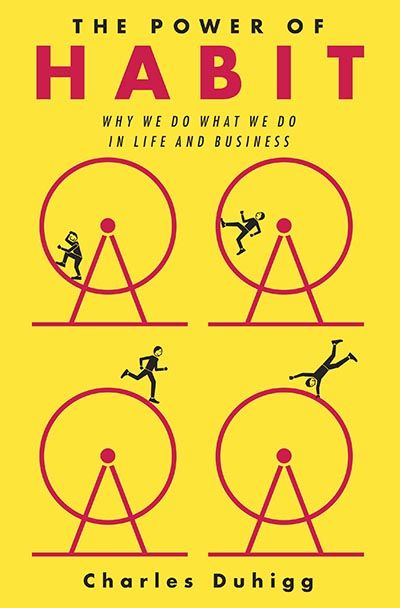
by Charles Duhigg
4OurElders' Takeaways From Another Recent Read-The Power of Habit: Why We Do What We Do in Life and Business by Charles Duhigg
The Habit Loop-Starts with a "cue," followed by a "routine" that is propelled by a craving for the "reward" it receives, which loops back so that the same cue will trigger over time the same actions/routines. (Compare Covey's definition of a habit in his seminal book The Seven Habits of Highly Effective People-the intersection of What To Do with Want To Do and How To Do something).
"Habits are not destiny… habits can be ignored, changed, or replaced…But [w]hen a habit emerges, the brain stops fully participating in decision making. It stops working so hard, or diverts focus to other tasks. So, unless you deliberately fight a habit-unless you find new routines-the pattern [for better or worse] will unfold automatically."
"Over time, this loop-cue, routine, reward; cue, routine, reward-becomes more and more automatic. The cue and reward become intertwined until a powerful sense of anticipation and craving emerges. Eventually…, a habit is born."
Good habits all too often get changed into bad habits by having the wrong rewards and/or cues.
To change elder care in this country we must replace wrong workplace cues with right ones.
To Change elder care in this country we must replace a workplace with no, bad or inconsistently applied rewards with consistently applied RIGHT rewards.
To change elder care in this country we must create a craving for those right rewards.
To change elder care in this country we must help direct changes in personal habits and corporate routines in reaction to righted cues and rewards and assist in creating a craving for these rewards.
In elder care for example-today, too often the key corporate cues are profit related-census/filling the beds and cutting costs; the routines that develop include taking in residents/patients who may not be able to be well cared for, cutting housekeeping, maintenance and dietary costs; the rewards are "keeping your job," incentive pay, raises, etc and everyone craves these things so a BAD habit is established and becomes ingrained to the disadvantage of every resident/patient and family member.
While profits are important, compare a model where care and service cures predominate-the cues include resident/family/staff satisfaction, legitimate quality measures, better hiring, retention and training. Imagine the routines that begin to develop to ensure the necessary craving develops for rewards that are consistent, fair and specifically designed to create the craving that helps this loop develop into a full-fledged GREAT habit. And the result-great care and service that unfold "automatically" in this new environment.
All of this theory has been applied with Febreze deoderizer, Pepsodent toothpaste, Starbucks Coffee, in football, alcoholic rehabilitation and throughout consumer goods and services, creators everywhere--every major producing chain out there (think Wal-Mart and Target for example)-- know what you want before you know what you want and they know how to make you want it; and it's not too complicated to apply to elder care to bring about fundamentally different results for OUR "customers."
And the beauty of the ease of this change for our industry is that research shows that good new habits are always easier to create and replace bad habits with IF there is a higher cause involved; and what higher cause is there than providing the best care and service for our elders and their families?
"For habits to permanently change, people involved [MUST] believe that change is feasible." Seeing change not only as feasible but as DESIRABLE is our first challenge in pursuing change in elder care-see our recent Takeaways from the book What Got You Here Won't Get You There for some of the key BAD behavioral habits that are certainly found in elder care and MUST be changed for us to make progress in care and service.
"[S]ome habits have the power to start a chain reaction, changing other habits as they move through an organization…These are 'keystone habits,' and they can influence how people work, eat, play, live, spend and communicate. Keystone habits start a process that, over time, transforms everything…The habits that matter most are the ones that, when they start to shift, dislodge and remake other patterns." Therein rests the answer to necessary change in elder care-a focus on one win at a time with keystone habits that are actually pretty easy to identify if one just thinks about it in the context of a care and service model versus a profit-first model.
Crisis helps open stakeholders to change and whether the industry admits it now or not, it is in crisis; one of 4OurElders' working propositions is that "the current state of elder care in this country is a threat to our national integrity."
Extensive surveys in the exercise industry show that "while a facility's attractiveness and the availability of [certain amenities] might cause people to join in the first place, what got them to stay…retention, the data said, was driven by emotional factors…people…looking for a human connection." That is EXACTLY true in the elder care arena when someone is looking for a home for themselves or a loved one and MUST inform the nature of needed change in the elder care industry.
How to begin needed change-to forge NEW, BETTER habits in elder care: Identify the routines, experiment with rewards, isolate the cues and have a plan. And BEGIN NOW.